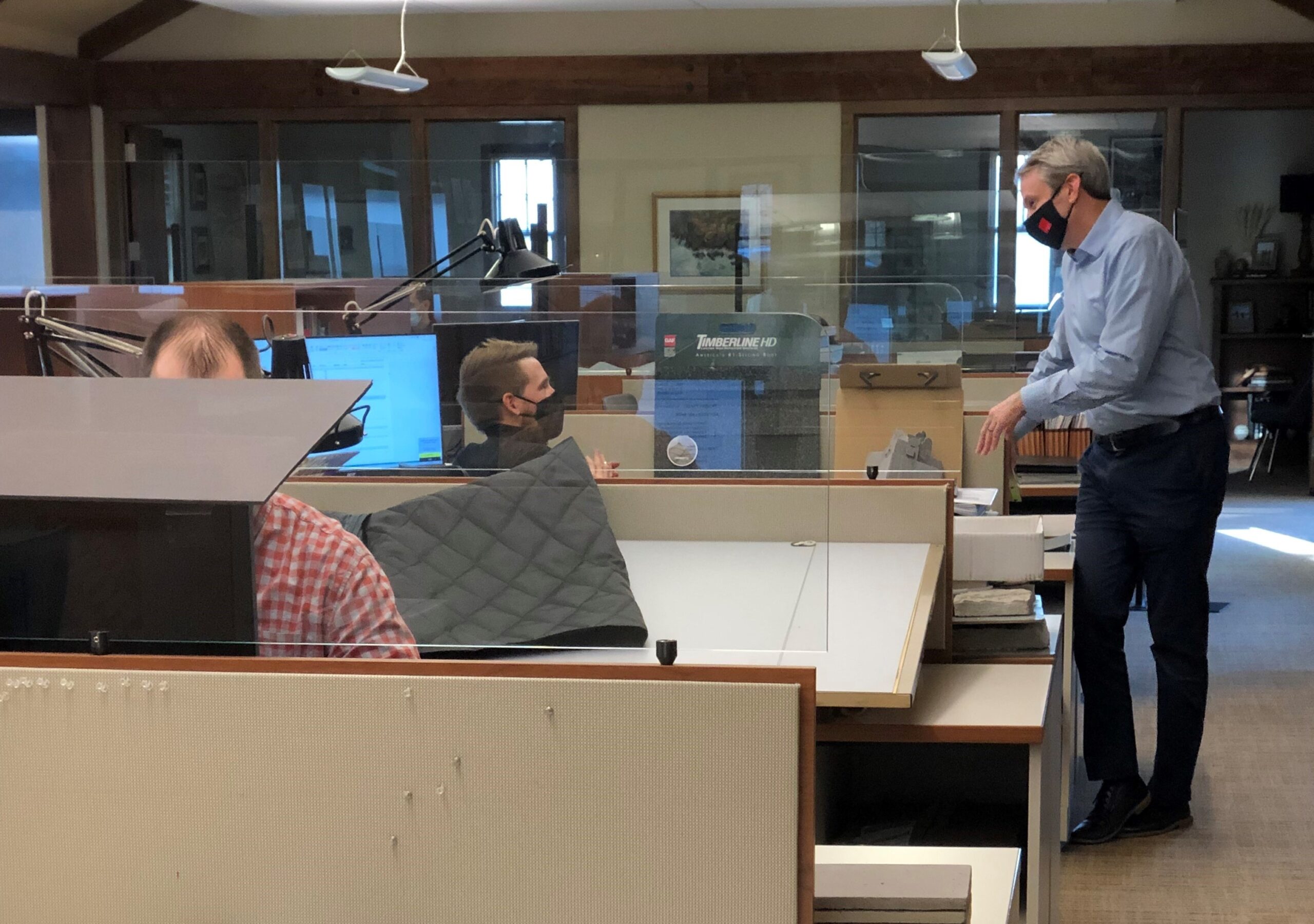Getting Back to the Office
January 31, 2022It’s good to be back in the office! The return for me was doubly good as I got to move into an office with walls and doors.
You Can’t Take the Code Review out of the Reviewer
My new office door is in close proximity to several of our firm’s designers. Why would that make any difference to the Building Code Compliance person? As I pass everyone’s desk, I look at their drawing boards. Not with any specific intent for code review, but just as a course of curiosity. I will, and do, look at all the projects as they develop: that’s what I am here for. But I previously did not get a chance to look at designs as they are being hatched. When it is early, a lot of creative juices are flowing, and designers can, and should, feel uninhibited to explore any possibility out there. Restrictions of any kind, including building codes, can limit a potential solution. In many cases compliance issues may be addressed in a way that doesn’t compromise that initial (and awesome) solution. But sometimes I just can’t help but feel a disturbance in the Force.

Spotting a Distancing Dilemma
A team was developing some very preliminary plans and images for a tall and long (but narrow) building in an urban area. All I could see on the screen was a 3-D perspective. I don’t know why, and I didn’t really even think about it first, but I said, “Those stair towers are too close together.” Could I measure them? No, I couldn’t even see the plan. I just felt it. Of course the designers involved said that couldn’t be the case. They switched to the plan view, and sure enough, the stairs were just a bit too close.
You see, in a building that requires two exits, the entries into those exits (the stair towers) need to be separated by a certain distance, which is a function of how wide the plan is overall. Not sure how, but I could just tell based on where the stair towers exited to grade in the perspective. This was a very early design concept, so stretching the stairs apart hurts no one, but now we have a plan that is compliant to start.
You Can’t Have Half a Stair
As I mentioned above, most buildings require at least two exits. There are exceptions, including small residential apartments three stories or less. I happened to see a plan with one such building. The fact that there was one stair merited a double take from me. The problem was, the stair’s exit at the bottom didn’t directly discharge to the outside. It emptied into a little lobby or corridor in the middle of the plan. That is a problem.
In a normal minimum two-exit building, some of the exits (but no more than 50%) may discharge through the ground floor – with some exceptions. However, 50% of one is not a whole number. You can’t have a half a stair. Kind of like counting required toilet fixtures – if you need a fraction of a toilet, you need a whole toilet. With stair towers, it is similar, if you have one exit, it must exit to grade. This plan was also an early concept and rearranging the exit stair did not dilute the plan concept one bit.
The Beauty of Early Code Compliance Review is in the Eye of the Beholder
I feel as though the Designers are going to get together and buy me a pair of blinders before 2023.

Jim Mehaffey, AIA, “The Yeoman Architect” is a Senior Project Manager with a specialized focus on understanding and managing the complexities of regulatory requirements in multifaceted projects. He routinely confers with local and state code officials throughout the country to review project specific issues and challenges prior to and during construction.
Jim currently serves as chairperson of the AIA PA Building Codes Subcommittee., providing educational content to members, as well as working with State Legislators on amendments to the Construction Code language. He is also a board member for LanCode, the Lancaster County Code Association, and serves on the American National Standards Institute (ANSI) workgroup currently defining the technical provisions of the code.